
Here you can get up close to our friendly mob of red-necked wallabies, also known as Bennett’s wallabies.
These curious creatures are native to Australia and New Guinea, and belong to the same family as kangaroos – the macropod family, meaning “big foot“.
Red-necked wallabies are especially well-suited to the UK climate, which is why you might be surprised to learn there are around 100 wild wallabies living in the UK today!
They originally escaped from a zoo almost 100 years ago and have been thriving in the countryside ever since.
Our wallabies love to snack on grasses, roots, weeds, and tree leaves, and while they’re mostly solitary animals in the wild, they’re happy to hang out together when there’s plenty of food, shelter, or water around – just like here at the farm!
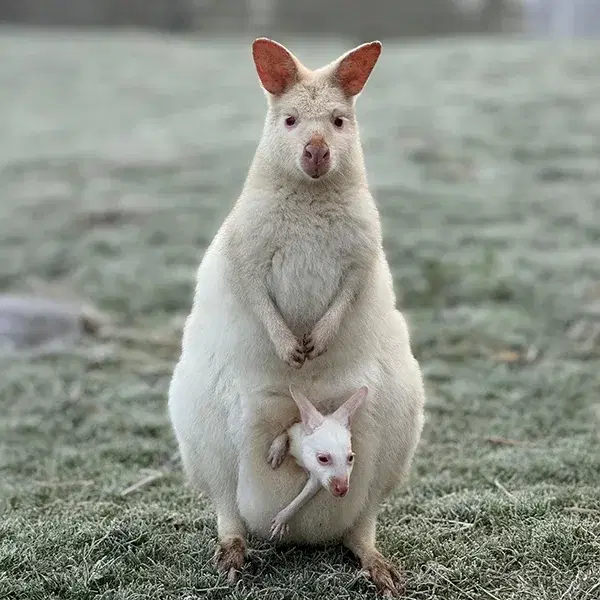
Meet Jilly!
Jilly is our special white wallaby. She was orphaned as a joey and hand-reared by our Animal Welfare Team.
You might recognise her from The Yorkshire Vet, where her story was shared.
She’s now a much-loved member of the mob.
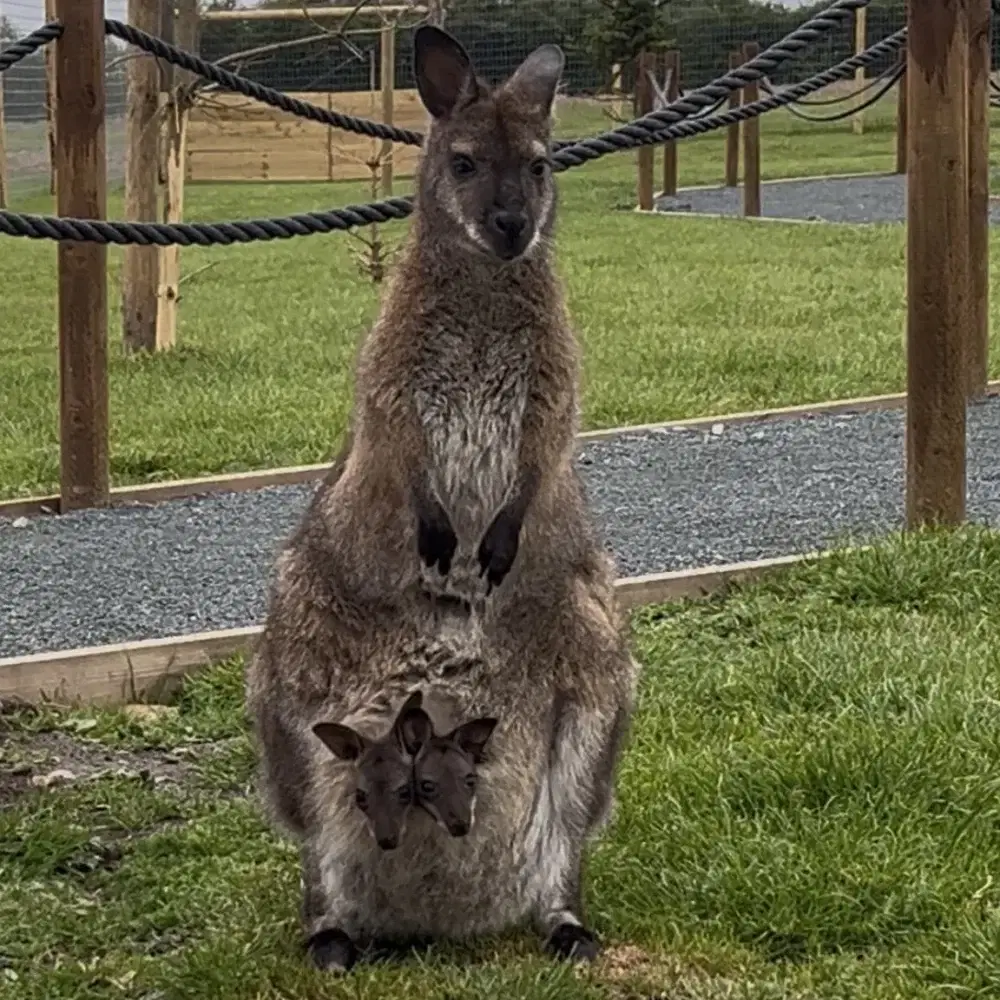
Wallaby Pouch Hoppers!
Keep a close eye on the mums – you might spot something a bit cheeky going on… Some of the joeys have been seen jumping in and out of other mums’ pouches – not just their own!
This kind of “pouch swapping” isn’t very common, but it can happen when the group is relaxed and close-knit. It’s a bit like having a sneaky sleepover with the neighbours!
It’s one of the many reasons we love watching their playful personalities – there’s never a dull moment in 42 Wallaby Way.
Who can you spot in 42 Wallaby Way?
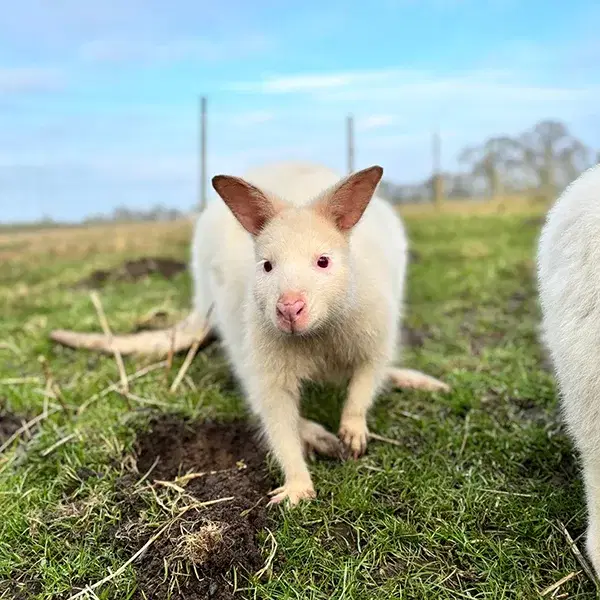
Morris

Jilly
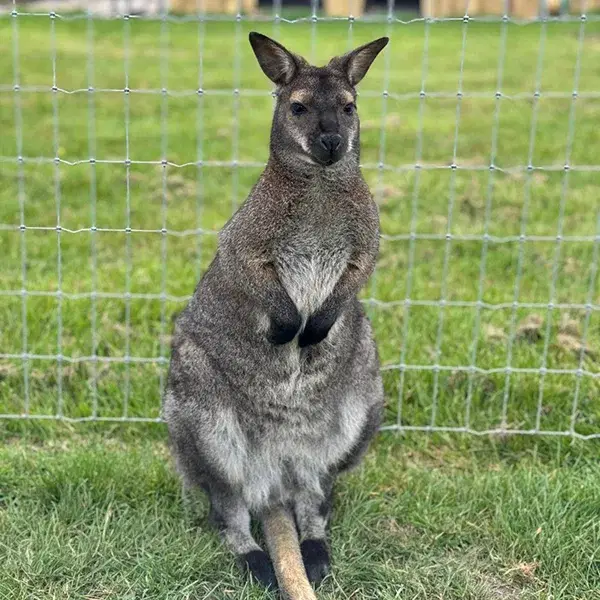
Bruce
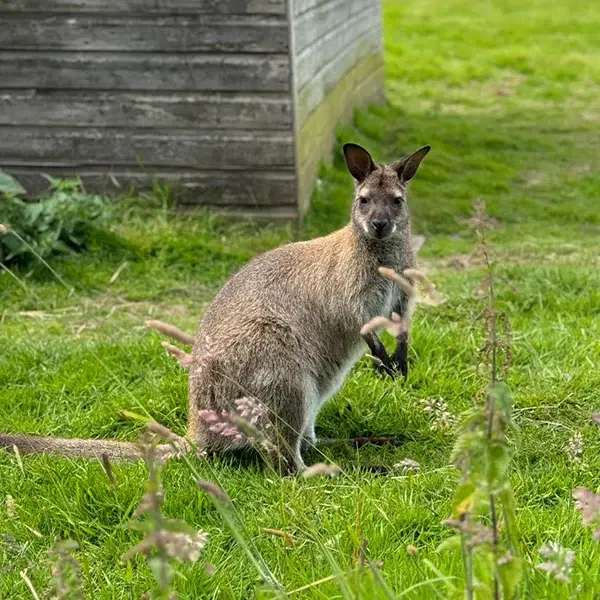
Renee

Darla
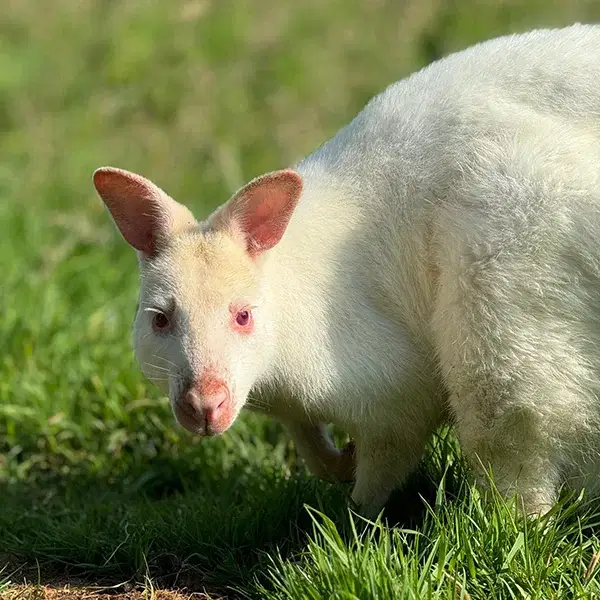
Walter
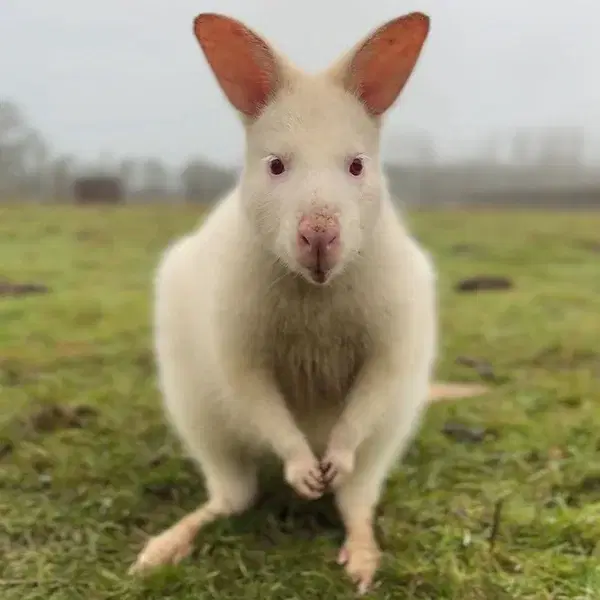
Remi

Pearl

Wallaby Facts
- When a Wallaby is born they stay in its mothers pouch for about 280 days.
- Wallabies are marsupials, just like kangaroos – they carry and nurse their young (called joeys) in a pouch.
- Smaller cousins of kangaroos, wallabies are generally more agile and better suited to rocky or wooded environments.
- A baby wallaby is called a joey and will stay in the pouch for around 6–8 months before hopping out more regularly.
- They have strong back legs for hopping and a thick tail which helps them balance while moving.
- Wallabies are most active at dawn and dusk – this is called being crepuscular.
- There are over 30 different species of wallaby found across Australia and nearby islands.
- Wallabies use their ears to listen out for danger, and they can swivel them around like little radar dishes!
- Despite looking cuddly, wallabies are wild animals and prefer not to be touched – always admire from a gentle distance.

